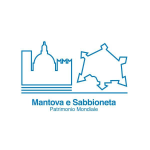URBAN LANDSCAPE. The sense of place in Mantua and Sabbioneta
The outstanding value of Mantua and Sabbioneta lies less in their exceptional individual artistic features than in the complexity of their urban planning.
The spatial layout designed by the Gonzagas stands as a symbol of Renaissance culture in the world. Mantua and Sabbioneta were inspired by the ideal of the ‘perfect city’ developed by contemporary humanist architects such as Leon Battista Alberti.
Whether transformed or built anew, the city is tailored to both the needs of its inhabitants and the aspirations of its rulers.
It also reflects the Renaissance principles of functionality, perspective and interaction with the natural landscape.
Cities are one of the most important categories on the World Heritage List.
The historic urban landscape serves as a repository of cultural, social, natural and human values: a space for meeting and inter-relating, contributing to a sense of place.
The strong identity of Mantua and Sabbioneta encourages reflection on the role of cities today and how to plan of those of the future.
